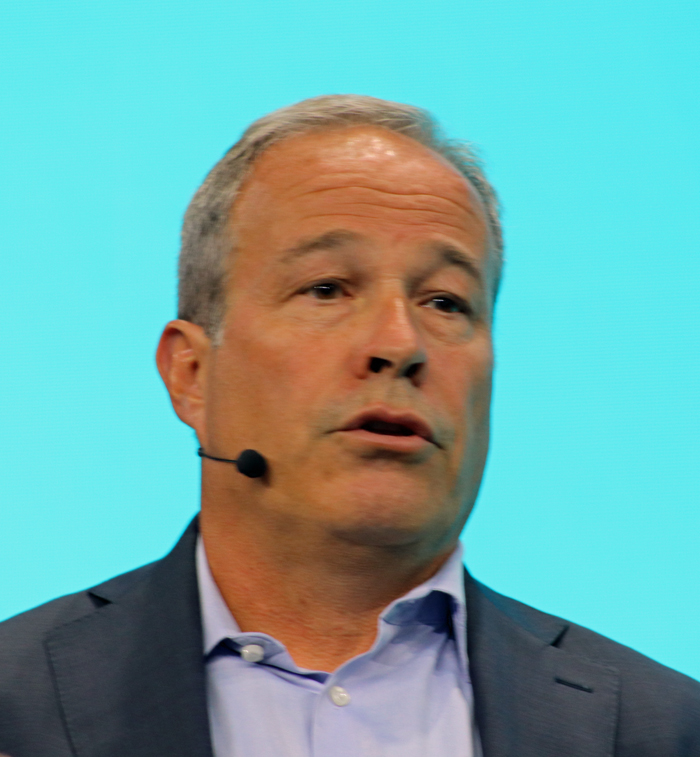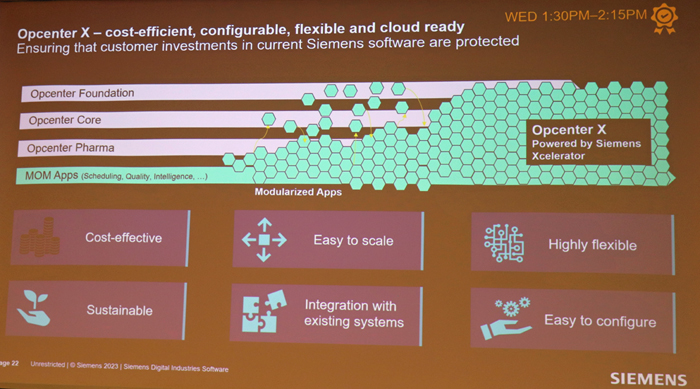Siemens Digital Industries Software’s major customer event for Europe took place this year from July 10 to 12 near Munich in Unterschleissheim. Around 1,000 participants came to get up to date on the development of industrial software in their respective application areas and to exchange ideas with Siemens specialists and other users. The motto: “Join the Transformation. Be the Change.”
The main part of the large-scale event – in addition to the accompanying partner exhibition – consisted of an enormous variety of breakout sessions, including keynotes for the individual application areas.
In his opening keynote, Bob Jones, Executive Vice President for Global Sales and Customer Success, took a broad stroke to give an idea of how Siemens Digital Industries Software intends to concretely shape the currently all-encompassing change in industry – from sustainability to energy transition to efficiency optimization and, of course, digitalization.
Siemens also sees the use of AI by industry as an important approach, emphasizes the importance of Digital Twins or Digital Thread, and assumes that the future of IT also for industry lies in the cloud.

The plenary session at the opening (photo Sendler)

Bob Jones, executive vice president of global sales and customer success, Siemens Digital Industries Software (photo Sendler).
One major special feature of the company’s own offering was highlighted in some detail by Bob Jones, and that was the extremely broad portfolio for the semiconductor industry that had been added at the time with the acquisition of market leader Mentor Graphics.
This presentation of the Semiconductor Lifecycle Management (SLcM) processes now supported by Siemens software alone would have been worth a special keynote on the main stage. Especially since it is precisely this industry that will have a major influence in the near future on how the next stage of the electrification of our society succeeds.
The “Digital Manufacturing Keynote – The criticality of digital and smart manufacturing” by Zvi Feuer, Senior Vice President Digital Manufacturing, gave a highly interesting presentation of the Siemens Xcelerator-based Opcenter X, whose release is now announced for this fall.
This is a microservice architecture that provides companies with worlds more flexible functionality for their production than previously implemented MES solutions ever could. Siemens is taking care to ensure that investments already made in corresponding tools from its own company do not become superfluous, but rather interact well with them.

Der Kern und die ersten Apps von Opcenter X werden im Herbst auf den Markt kommen (Foto Sendler)
Opcenter X is, as far as I know, the first major application with which Siemens is responding to the current trend towards composable software, i.e. container technology based on open standards such as Linux and Kubernetes.
Zvi Feuer, with more than 30 years of experience in exactly this environment, understood perfectly how to highlight the major advantages.
Those present in the room, which was rather too small for the topic, were able to see how Siemens can use data from Smart Factory and digital product twin to simulate production itself in a very realistic way. The new buzzword Industrial Metaverse did not have to be stressed for this in the presentation.
(By the way, there is a detailed interview with Tobias Lange, Senior Vice President Manufacturing Operations Management and Digital Manufacturing at Siemens, on Siemens’ strategy for composable software in the background section of this portal).
Realize Live is certainly the most important event of the year for Siemens Digital Industries Software as well as for its customers to discuss the current challenges for software development and use. It might be helpful to separate the strategic keynotes more clearly from the application and partner sessions and make them easier to find. And the networking of such a large community would certainly benefit from being accompanied by more gentle sounds. After all, dancing is not part of such meetings anyway. And women are unfortunately still a vanishingly small minority in the technology sector.
